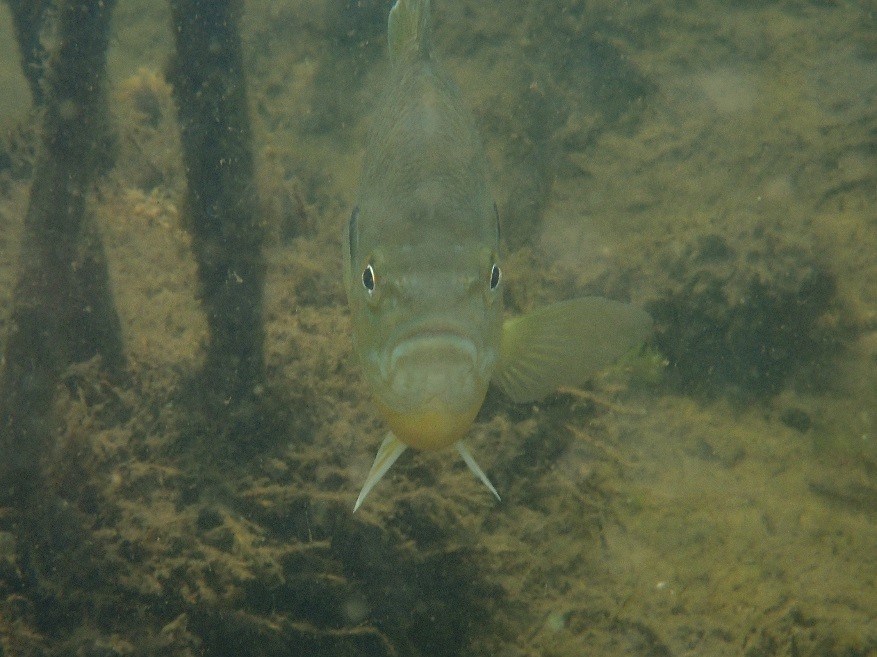Mission Log K32.J4: Underwater Escapade

By: Caroline Fazzio
The date: June 15, 2018. The location: an undisclosed water-body in east central Minnesota. The mission: investigate the mussels invading the lake.
The bleak sun bled through a film of grey clouds as we loaded the boat with the field gadgets needed to complete the day’s assignment: scuba vests, air tanks, breathing regulators, flippers, wetsuits, snorkels and masks, life vests, a dive flag, quadrant samplers, and other gizmos such as sunscreen, water bottles, and a data log sheet.
The humid air whipped our faces as the boat sped across the churning expanse of the great lake. Its green-tinted waters swirled around us in a ceaseless tango with the gusting wind of the morning. When we arrived at the site of our mission, we began prepping for the dive. We activated the dive gear, located the starting GPS coordinates, laid 300 feet of transect tape underwater, and anchored the dive flag. Lastly we decoded the data log sheet (from meters to feet). Decoded, the sheet informed our dive team where to conduct their searches—the crux of the day’s mission.
Once set with their individual assignments, our two divers plunged fearlessly into the waters below. After ensuring they were set, I geared up myself, grabbed my underwater digital recording device, bid farewell to our watercraft pilot, and plunged after them on a sub-mission of my own.
The foreign landscape beneath the water’s surface stretched out in all directions. My heart pounded and my breaths came in sharp, quick gasps as I adjusted to the shock of the cold water. Through the swirling sand and algae I could see our primary target encrusted to the lake bottom—the invading zebra mussel. I prepped my recording device, paused to control my breathing, and then swam towards the closest diver. Approaching, I could see my companion crouched over a quadrant sampler, meticulously counting the number of zebra mussels within a section. I quickly began capturing photographic evidence of my team’s work. After a few snapshots, I turned and began following the trail of the transect tape as it disappeared further into the water. The lake floor began dropping out from below me as I progressed until I eventually saw the form of our second diver, and prepped myself for more picture-taking.


We continued like such until the zebra mussel counts were complete along two transects. By then it was mid-afternoon and storm clouds were brewing on the horizon. Dripping wet and tired, yet content in our success, we collected our gear and raced the rain-clouds back to the boat access. The data collected will further our understanding of the dynamics between zebra mussels and Minnesota lakes, and guide future management. Mission status: Accomplished.

*All pictures are courtesy of the Minnesota Department of Natural Resources, 2018.